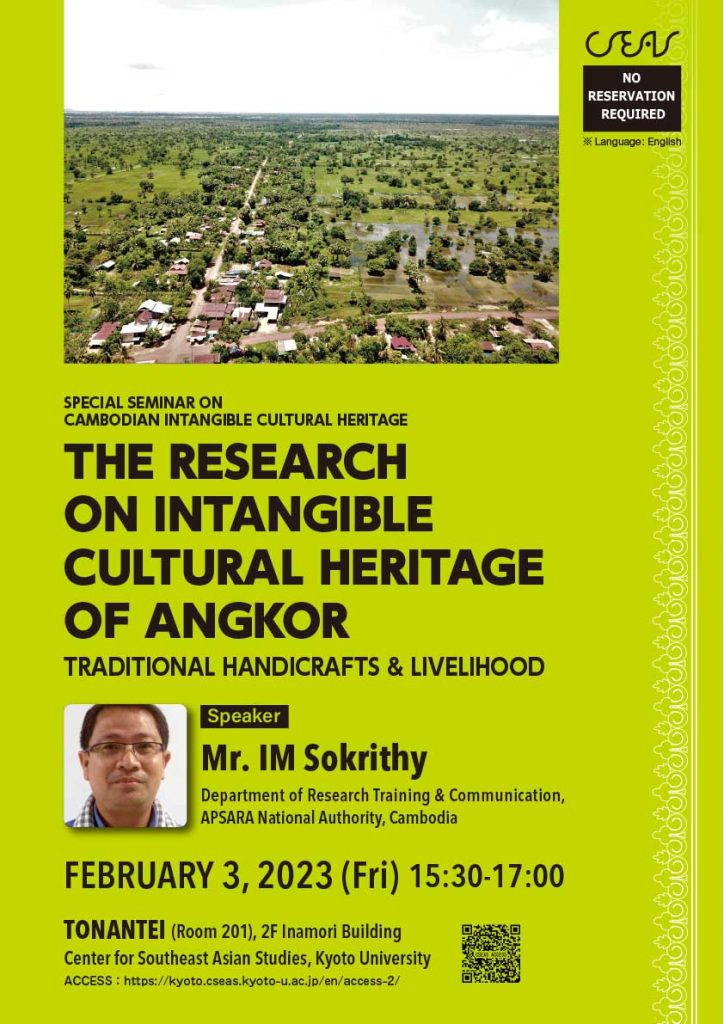Date and Time: 15:30-17:00, February 3rd (Fri), 2023
Venue: Tonantei (Room 201), 2F, Inamori Building, Center for Southeast Asian Studies, Kyoto University
Title: The research on Intangible Cultural Heritage of Angkor: Traditional Handicrafts & Livelihood
Speaker: Mr. IM Sokrithy, Department of Research Training & Communication, APSARA National Authority, Cambodia
Abstract:
Since 1992, the Angkor complex has been classified as a UNESCO World Heritage site. Angkor designates not only a geographic region, but it also designates a cultural landscape which includes a living cultural heritage of inestimable importance in anthropological and linguistic terms. The villagers of the Angkor Region are known to be particularly conservative with respect to ancestral traditions, and a great number of archaic cultural practices that have disappeared elsewhere continue to be performed in its villages. Angkor region stretches from the great lake of Tonle Sap on the south toward the Kulen Range on the north, which covers an area of several thousand square kilometers. Based on geographical and environmental factors in the context of a long history of human occupancy, the region can be distinguished by three major types of village community. Each type occupies one of the main ecological sub-zones of the region and is differentiated by socio-cultural characteristics. Angkor world heritage site covers on area 401km2, covered partially the three types of the community, including 112 villages.
The research conducts on the selected representing of 60 villages, which is firstly, focusing on the village landscapes which are constrained by settlement structure and the local environment. Many villages are situated on ancient infrastructure. Other villages are found close to ancient temples or clustered around a temple, which gives a different character to the village landscape. Some villages have gradually developed in a cluster around a central Buddhist monastery. The villages are surrounded by rice fields, vegetation or the forest of their communities. Secondly, the research is working on traditional handicraft, weaving, blacksmith, collection of medical plants and other natural forest products for trading with the citizen within Angkor region. The residents of the Angkor area trade these products for fish and other commodities from the Tonle Sap area. The residents of the Angkor area trade these products for fish and other commodities from the Tonle Sap area.
The results from the study shows the daily life of many Angkorian villages which are supposedly not changed much, traditional crafts and weaving are still practiced. These include basket, mat and natural broom dressing; root thatch dressing; weaving cotton and making alcohol from rice. These activities are performing under or near the house. These practices have unique cultural value and should be the focus of sensitive management approaches as they may be utilized by the tourism industry, in which the Contribution of Intangible Cultural Heritage for Sustainable Communities Development will be responded.
Contact: kobasa[at]cseas.kyoto-u.ac.jp
